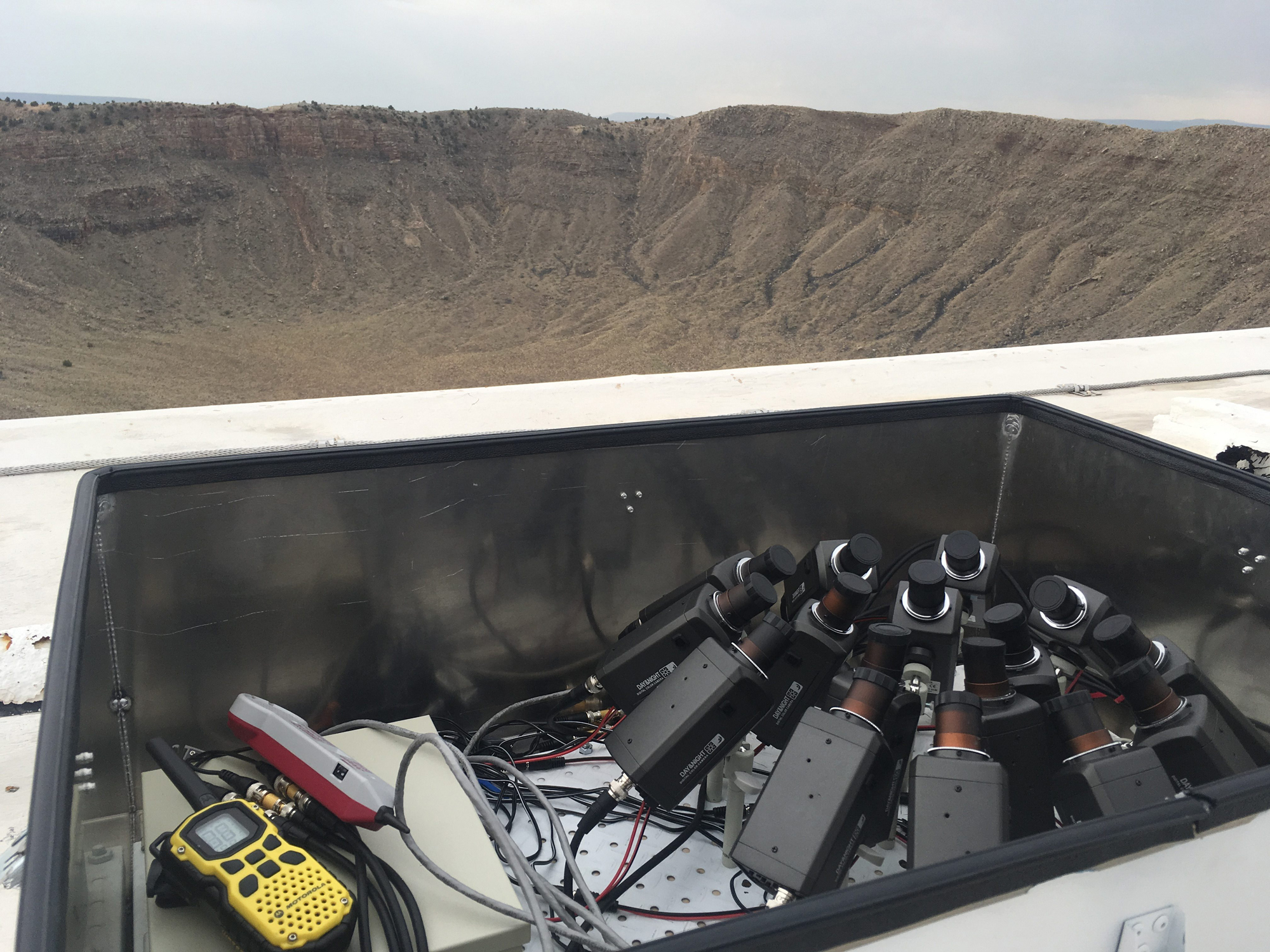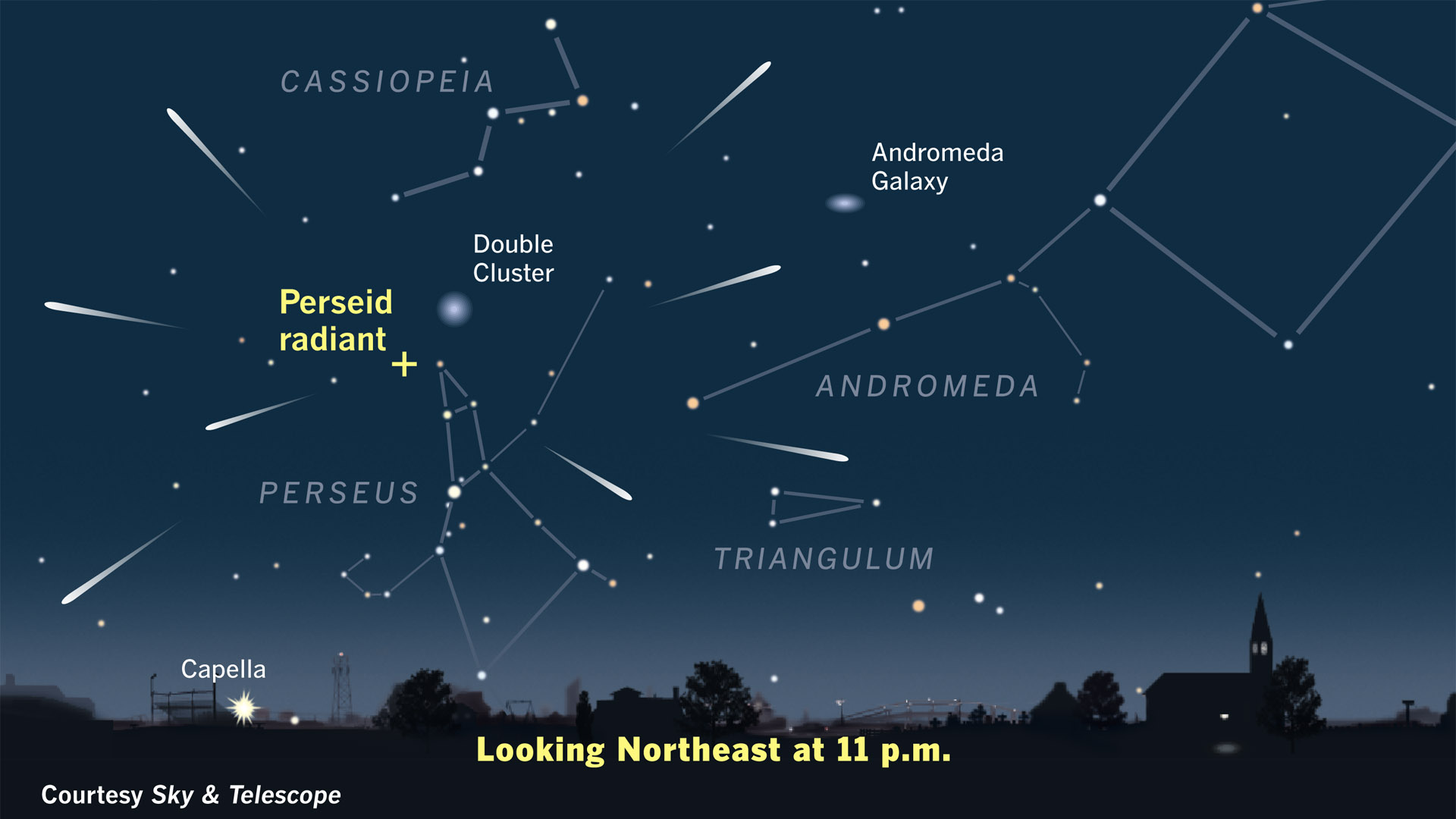New Cameras to Track Perseid Meteor Shower from Meteor Crater

Scientists are hoping to see one of the year's best meteor showers from one of the most scenic places on Earth: Arizona's Meteor Crater.
Astronomers with the Lowell Observatory in Arizona have activated a new meteor video surveillance system at Meteor Crater (formally known as Barringer Crater) just in time for the 2018 Perseid meteor shower this weekend.
The Perseid meteor shower will peak overnight tonight (Aug. 12-13), with between 60-70 meteors visible per hour for observers with clear, dark skies away from city lights. The meteor shower occurs each year when Earth passes through dust from the Comet Swift-Tuttle. [Perseid Meteor Shower 2018: When, Where & How to See It]
The new tracking system at Meteor Crater will observe Perseid meteors using 16 video cameras that will watch the entire night sky. Meteor Crater is about 35 miles east of Flagstaff, Arizona. It was caused by the impact of an asteroid 164 feet (50 meters) wide hit the Earth 50,000 years ago.
"The cameras pinpoint recovery locations for large meteors that impact Earth," Nick Moskovitz of Lowell Observatory said in a statement. "Our goal is to discover new meteor showers and better understand meteors and their link to asteroids and comets in the solar system."
Moskovitz leads the Lowell Observatory CAMS project, or LO-CAMS, which is part of the larger Cameras for All-sky Meteor Surveillance (CAMS) project led by meteor astronomer Peter Jenniskens of the SETI Institute and NASA's Ames Research Center in Moffett Field, California.
CAMS meteor-tracking systems use a network of 16 video cameras per location instead of a single all-sky camera with a fish-eye lens to track meteors.
Breaking space news, the latest updates on rocket launches, skywatching events and more!
"Because this approach uses much more sensitive cameras, trajectories for hundreds of meteors per night are calculated and posted almost immediately on the web," Moskovitz said. "And by measuring these trajectories at high precision, we are able to determine where they came from in the solar system."
The new LO-CAMS system is the second built by the Lowell Observatory. The first is at the observatory itself in Flagstaff, Arizona. Meteor Crater Enterprises, which oversees tours and other facilities at Meteor Crater, funded the new meteor-tracking station.
If bad weather spoils your Perseid meteor shower this weekend, you can watch the a live webcast here, courtesy of the astronomy broadcast service Slooh. The 6-hour webcast begins at 5 p.m. EDT (2100 GMT) and you can watch it directly on Slooh.com.
Editor's note: If you snap an awesome photo of the Perseid meteor shower that you'd like to share with Space.com and our news partners for a potential story or gallery, send images and comments to spacephotos@space.com.
Email Tariq Malik at tmalik@space.com or follow him @tariqjmalik. Follow us @Spacedotcom, Facebook and Google+. Original article on Space.com.

Tariq is the award-winning Editor-in-Chief of Space.com and joined the team in 2001. He covers human spaceflight, as well as skywatching and entertainment. He became Space.com's Editor-in-Chief in 2019. Before joining Space.com, Tariq was a staff reporter for The Los Angeles Times covering education and city beats in La Habra, Fullerton and Huntington Beach. He's a recipient of the 2022 Harry Kolcum Award for excellence in space reporting and the 2025 Space Pioneer Award from the National Space Society. He is an Eagle Scout and Space Camp alum with journalism degrees from the USC and NYU. You can find Tariq at Space.com and as the co-host to the This Week In Space podcast on the TWiT network. To see his latest project, you can follow Tariq on Twitter @tariqjmalik.

